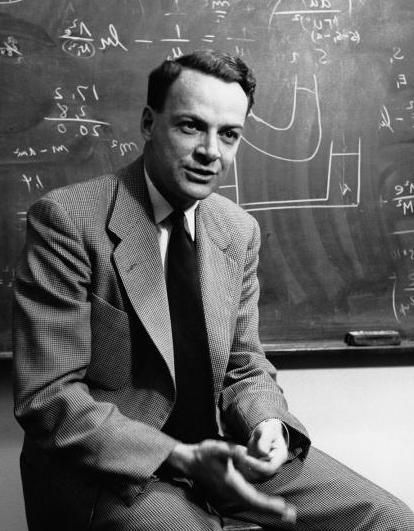Table of contents
“The first principle is that you must not fool yourself and you are the easiest person to fool” Richard Feynman
When we’re studying, it can be easy to think that we have a grasp of a subject, especially if we feel confident that we’ve learnt our notes and we feel that we can adequately answer questions. However, how often have you stopped to try and explain a concept rather than simply convinced yourself that you’ve learnt it and moved on?
There is a difference between knowing the name of something and understanding it – a key difference that we often overlook in our studies. I’m sure we’ve all fallen into that trap at some point. This is where the Feynman Technique can help.
The method is based around the idea that one of the most effective techniques to enhance your understanding of a topic is to imagine that you are teaching the material that you have learnt to someone who has absolutely no idea about the topic that you’ve just learnt – for instance a small child.
This method was named after Nobel prize-winning physicist Richard Feynman, who was known for being able to explain complex scientific material in simplified terms and diagrams that people could understand, affording him the nickname ‘The Great Explainer’.

So how do you use it? There are four steps to follow:
- Choose a topic you have recently studied and/or a topic for which you’d like to test your knowledge and understanding.
- Explain the concept using simple language. Pretend you are teaching and explaining it to a small child or someone who has never come across the topic before. The key here is simplicity – explain the concept using simple language. Don’t simply define the concept but, if it is a mathematical concept for instance, work through examples to show how the concept works in practice.
- Identify the areas you found particularly problematic and/or the gaps in your explanation and return to your notes, lectures, textbook until your understanding of these areas has improved. Pinpoint the parts where you had to resort to using technical terms and challenge yourself to break down those terms into simpler terminology. Ask yourself, would a small child understand what you were explaining, or would they ask ‘why does that work’ or ‘why is that the case’ or ‘what does that mean’. The key is not only to identify complex areas of your own explanations but also to challenge and identify where you have made assumptions based on what you already understand intuitively.
- Review and simplify further; ask yourself the question – could you explain this to a five-year old? If the answer is no, go back and repeat the process and your understanding so that you could.
The technique enables you to quickly overview a concept, identify areas that are weaker and, critically, requires active learning – you are forced to move beyond passively rereading or highlighting and actively think about how you would explain a particular concept in simple terms.
Although it appears to be a simple technique, it’s highly effective. Explaining concepts in this way enables you to reconstruct the core ideas and topics in your own words which helps reinforce understanding and comprehension.
Personally, I found myself using a version of this technique to great effect when I became stuck with my dissertation. I was struggling to see the wood for the trees with my research and I couldn’t work out which way to take my project or an appropriate structure. During the Christmas break, I decided to cut everything back and asked my parents to act as my ‘students’ and I tried to present my findings and explain my research as simply as possible to them.
This was not a quick ten-minute overview, I tried to talk through everything that I had done up to that point so, in that sense, it perhaps didn’t entirely adhere to the Feynman process, but it was incredibly effective. My parents asked questions for clarification which forced me to explain concepts that I had previously taken for granted and this really helped to clarify the research in my own mind. They weren’t there to offer help or advice – I wanted to leverage the process of simply explaining my project to identify where I had made assumptions and where I could improve.
After doing this, my dissertation suddenly regained its clarity and I could see a way to appropriately structure my research. From that point onwards, I actually came to enjoy writing it and it ended up being the best piece of work that I completed during my time at university.
If you can, leverage Feynman’s technique of explanation and add it to your armoury of revision tools which should all help to enhance understanding, increase productivity and improve performance.

